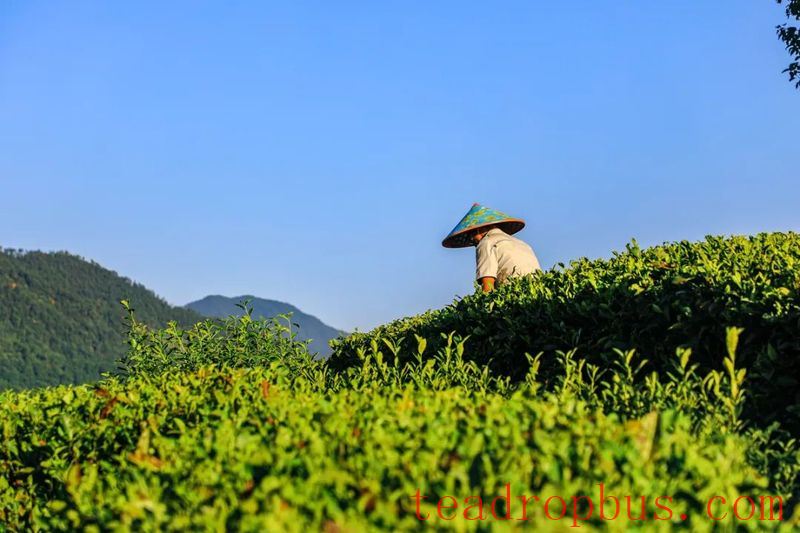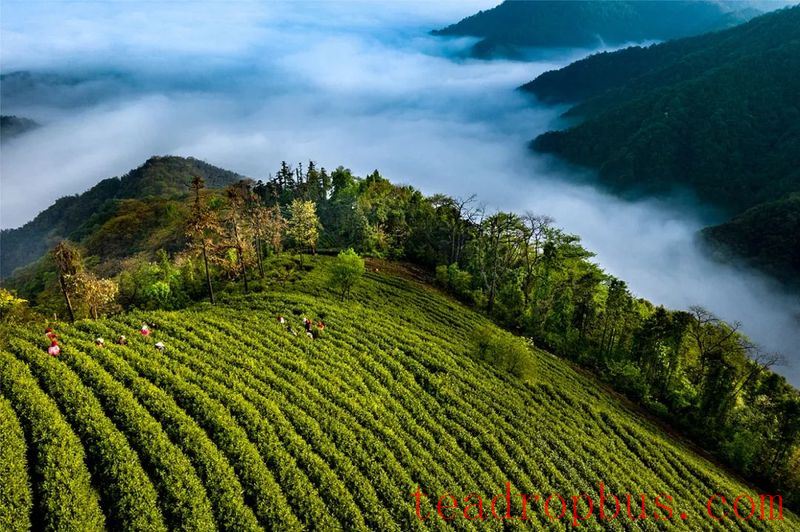While Tea gardens are a source of carbon emissions, they also have significant potential for carbon sequestration. Under the backdrop of the “dual carbon” goals, utilizing the carbon sink function of tea garden ecosystems to promote low-carbon development has become a primary objective. However, the lack of a comprehensive methodology for carbon sinks remains a key obstacle to assessing and verifying carbon sequestration in tea gardens.

This article draws on methodologies used in forestry carbon sink projects to explore a suitable approach for China's tea garden carbon sink projects. It focuses on changes in the biomass (aboveground and belowground) of tea plants and baseline soil organic carbon storage, excluding changes in litter and woody product carbon pools. This provides theoretical support for establishing an assessment methodology and a carbon trading market for tea garden carbon sinks.
Carbon Sink Function of Tea Gardens
The carbon sink function of tea garden ecosystems comprises two main aspects: CO₂ fixation by tea plants through photosynthesis and the fixation and preservation of organic carbon in tea garden soils.

The tea industry and its value chain emit approximately 15 to 19 kg of CO₂ equivalent per kilogram of tea produced. Sources of CO₂ include fertilizers, pesticides, and herbicides applied to the soil, electricity used for irrigation and processing, fossil fuels used in transportation, as well as the picking, storage, transfer, and sale of tea. Thus, tea itself is a source of carbon emissions. At the same time, tea plants are perennial woody evergreen plants with large canopy coverage and high leaf area index. During their growth, they absorb CO₂ through photosynthesis, which is then converted into surface organic matter via roots or litter, storing carbon in the soil. Therefore, tea garden ecosystems have substantial potential for carbon sequestration, which can be developed and utilized to become a significant and valuable carbon sink pillar.
Methodology for Tea Garden Carbon Sinks
In developing the methodology for tea garden carbon sinks, the core guidelines from the United Nations Framework Convention on Climate Change (UNFCCC) on afforestation and reforestation projects under the Clean Development Mechanism (CDM) were used. Reference was made to methodologies, tools, and procedures from carbon sink afforestation, bamboo afforestation carbon sinks, and others. Additionally, guidance from the Intergovernmental Panel on Climate Change (IPCC), including the National Greenhouse Gas Inventories Guidelines and Good Practice Guidance on Land Use, Land-Use Change, and Forestry, was considered. The methodology also drew upon practices and experiences from forestry carbon sinks in China and numerous research findings on low-carbon tea gardens globally.
In the methodology for tea garden carbon sinks, the definitions of baseline and carbon accounting primarily include: determination of project geographic boundaries, selection of carbon pools and greenhouse gas emission sources, project duration and accounting period, identification of baseline scenarios, argumentation for project additionality, division of carbon pools, carbon sink quantification (changes in baseline tea plant biomass carbon storage and baseline tea garden soil organic carbon storage), project carbon sink quantification (changes in project tea plant biomass carbon storage, project tea garden soil organic carbon storage, and estimation of greenhouse gas emissions within the project boundary), and calculation of project emission reductions.
This article mainly discusses content unique to the tea garden carbon sink methodology compared to forestry carbon sink methodologies, including the selection of carbon pools and identification of baseline scenarios, determination of baseline carbon sinks, project scenario carbon storage, and applicable conditions.
1. Selection of Carbon Pools and Identification of Baseline Scenarios
The selection of carbon pools for tea garden carbon sinks is outlined in Table 1. Aboveground and belowground biomass carbon pools are mandatory. Based on the availability of monitoring data, costs, and conservative principles, the inclusion of litter (litter and deadwood), soil organic carbon, and woody product carbon pools may be considered.
Table 1: Selection of Carbon Pools

2. Determination of Baseline Carbon Sinks
The baseline carbon sink for a tea garden project is the sum of all changes in carbon storage across selected carbon pools within the project's geographic boundaries in the absence of the project. According to the growth characteristics of tea plants, this methodology primarily considers changes in tea plant biomass (aboveground and belowground) and baseline soil organic carbon storage, while excluding changes in litter and woody product carbon pools.
(1) Calculation of Changes in Belowground Organic Matter Carbon Storage
Changes in the belowground organic matter carbon storage in tea gardens can be calculated using the dynamic ratio of belowground to aboveground biomass and changes in aboveground carbon storage in a given year.
(2) Calculation of Changes in Baseline Soil Organic Carbon Storage
Soil organic matter loss in tea gardens mainly occurs in the topsoil layer (0–30 cm) during cultivation. As planting years accumulate, soil organic carbon in the topsoil layer gradually recovers. Therefore, when estimating changes in soil carbon storage, the focus is on the 0–30 cm depth, with any changes in soil carbon storage at depths greater than 30 cm assumed to be zero.
Generally, when the age of the tea garden is less than 42 years, the annual change in baseline soil organic carbon storage can be estimated using equations related to changes in soil organic carbon storage per unit area in local or similar tea gardens. If the age exceeds 42 years, it is assumed that soil organic carbon storage reaches a relatively stable state, and changes in soil organic carbon storage do not need to be considered.
3. Project Scenario Carbon Storage and Net Carbon Storage
The project carbon sink is the change in carbon storage across selected carbon pools within the project's geographic boundaries under the project scenario, minus any additional greenhouse gas emissions resulting from the project. Under the project scenario, the selection of carbon pools aligns with the baseline scenario, primarily considering changes in the biomass (aboveground and belowground) of tea plants and baseline soil organic carbon storage, while excluding changes in litter and woody product carbon pools.
For tea garden carbon sink projects, since changes in litter and woody product carbon pools are zero, the net carbon storage is the difference between the biomass (aboveground and belowground) of tea plants and soil organic carbon storage under the project scenario versus the baseline scenario. When annual tea harvest volumes are similar, the difference in carbon storage under the project scenario and different harvesting methods under the baseline scenario is minimal, resulting in little variation in net carbon storage.
4. Applicable Conditions
This methodology for tea garden carbon sinks is primarily applicable to voluntary carbon offset transactions in greenhouse gas markets. Management practices in tea gardens should aim to reduce carbon emissions or increase carbon sinks where possible.
Land used for tea garden carbon sink projects must comply with national regulations and be designated as orchard land, characterized by intensive cultivation of perennial woody or herbaceous plants primarily for fruit or leaf harvesting, with a canopy cover of more than 0.5 or more than 70% of reasonable plant density per hectare, including seedling nurseries. The project site falls under one of three third-level planning classifications for orchard land—tea gardens. Project sites cannot be wetlands or organic soils, nor can they violate any national laws, regulations, or mandatory technical standards. Soil disturbance must adhere to scientific management requirements for tea gardens.
This study provides a foundation for promoting voluntary carbon offset transactions in tea garden carbon sink projects and establishes a scientifically sound, practical, and systematic methodology for tea garden carbon sinks.